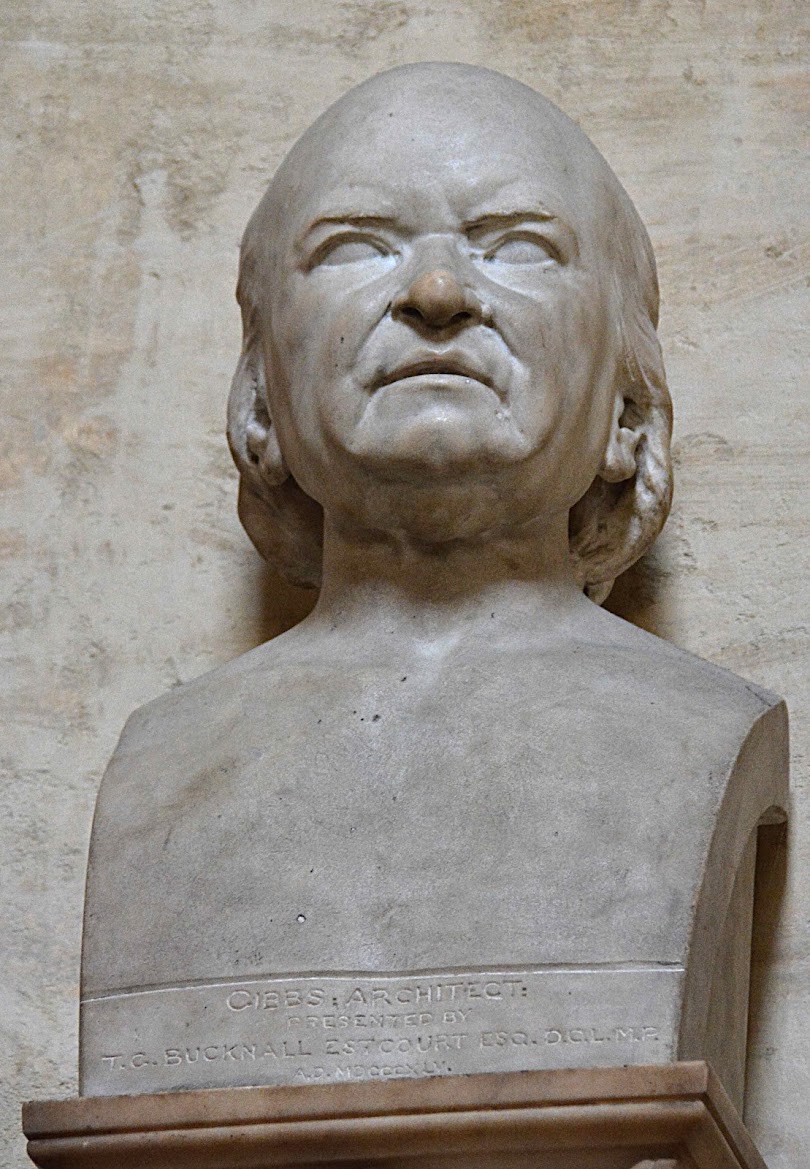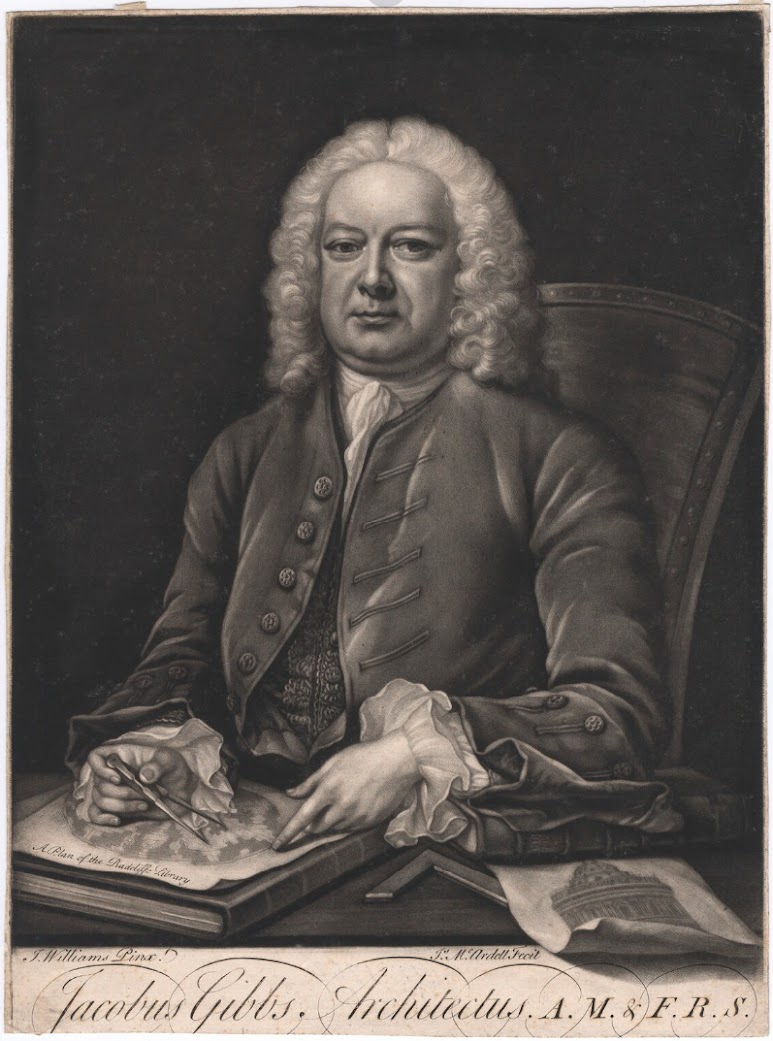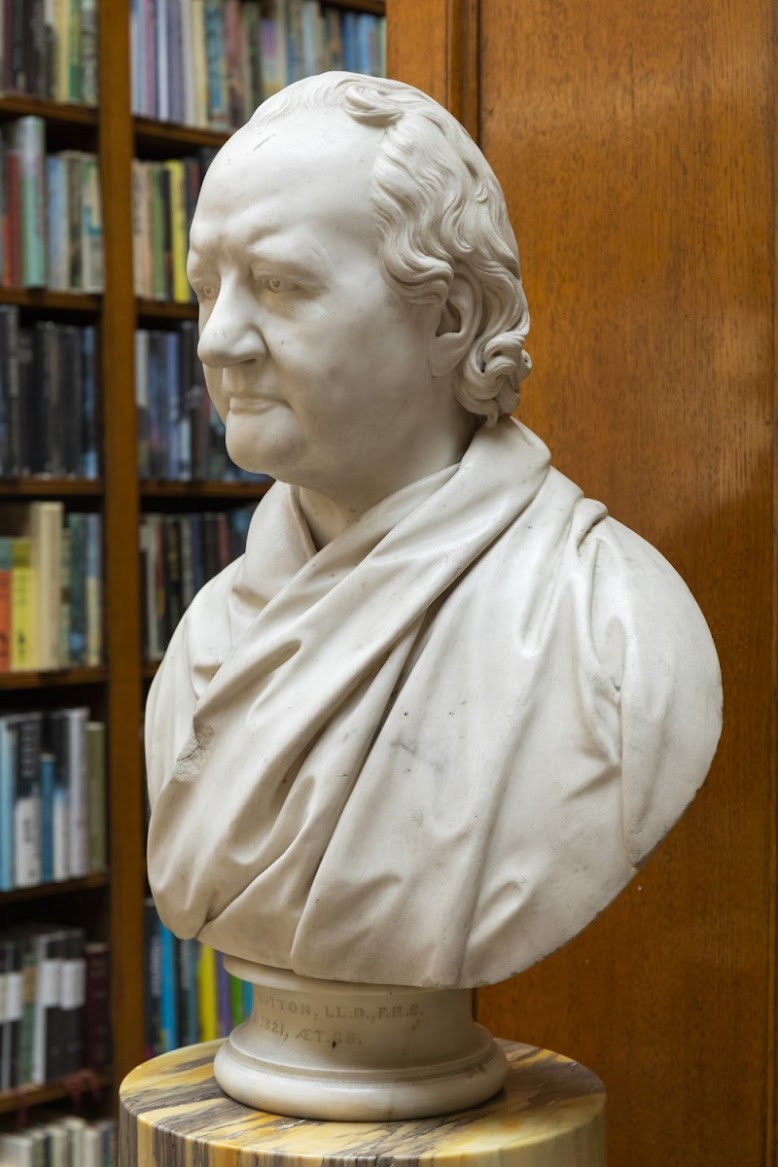A herma (Ancient Greek: ἑρμῆς, plural ἑρμαῖ hermai), commonly herm in English, is a
sculpture with a head and perhaps a torso above a plain, usually squared lower
section.
This post follows on from my post on the use of the classical eared socle by Nollekens and some of his contemporaries.
see - https://bathartandarchitecture.blogspot.com/2024/11/some-earlier-nollekens-busts.html
This form of bust was much used in antiquity and revived in the neo classical period of the mid to late 18th century.
The Engraving of the self portrait bust by Thomas Banks (below) is one of the first uses of this form of bust in England in the 18th Century.
The Marble Bust of George Dance.
Charles Rossi (1762 - 1839).
Royal Academy.
Notes below from the Royal Academy website.
This bust of the architect George Dance RA was gifted to the
Royal Academy by its maker Charles Rossi. Made in 1827, it was first exhibited
at the British Institution Exhibition of that year. Rossi and Dance had been
fellow Academicians for many years, and Rossi also sat to Dance for his pencil
portrait in 1798 which was part of the series of sketches made of Members of
the Academy which Dance produced over many years. Dance had died two years
before Rossi carved this bust, and it had a particular relevance for the Royal
Academy as Dance was the last to die of the founding Academicians.
Charles Rossi, was the son of an Italian immigrant, he was born in Nottingham in 1762. He was apprenticed to the Italian sculptor G. B. Locatelli, completing his apprenticeship in 1781.
That same year Rossi entered the Royal
Academy Schools, where he won two medals. During this time, he began exhibiting
at the Royal Academy. In 1785 Rossi was awarded a travelling scholarship which
enabled him to live in Rome between 1786 and 1788.
Once back in England, Rossi worked briefly for the Derby
china works (1788) and the clockmaker Vulialmy (1789) before establishing
himself as a sculptor. The two large lions he sculpted for the west watergate
of Somerset House (then the home of the RA) in 1790 served notice of his
talent. In the 1790s he produced large works with the mason-sculptor John
Bingley and executed church commissions, graduating to major commissions,
including four government commissions for memorials to military heroes of the French
wars for St Paul’s Cathedral. His work also incorporated portrait busts (two of
which are in the RA collection) and decorative work for architectural projects.
After his return to London, he formed a partnership with a mason-sculptor called J. Bingley, and drawing on his early training in terra cotta, made a variety of terra cotta and stone statues (much later he worked on terra cotta with J. H. Bubb).
He flourished in the 1790s, winning commissions
for architectural sculpture on important buildings, and designing four
monuments in St Paul's. He was elected ARA in 1798, and RA in 1802. Over the
course of a long working career, he managed to produce 16 offspring, by two
wives, and of these three at least became sculptors - Henry Rossi in London,
Frederick Rossi, and Charles Rossi, who became a monumental mason and went to
live in Barbados. Rossi himself stayed in London, lodging for a period with the
well-known painter Benjamin Hayden, in a modest house off Lisson Grove in
Marylebone.
Other artists were often critical of Rossi’s work, but he
was highly successful – in 1797 he was appointed as sculptor to the Prince of
Wales and subsequently as sculptor-in-ordinary to George IV and to William IV.
Rossi’s 1804 bust of the prince regent was widely admired, and he later
executed a frieze of The Seasons at Buckingham Palace. In 1802 he was elected
as a Member of the Royal Academy, where he continued to exhibit until 1834.
Rossi died at his London home in 1839.
https://www.royalacademy.org.uk/art-artists/work-of-art/bust-of-george-dance-r-a
.......................
The bust of George Dance illustrated here set me thinking about another herm bust which has been troubling me for since travelling to Oxford to research the portrait busts at the University.
......................
The Putative Plaster Bust of James Gibbs (1682 - 1754).
H 56 x W 33 x D 23 cm
Royal Institute of British Architects.
included in drawings catalogue, 1871.
Another version of this bust is on the staircase in the Radcliff Camera, Oxford.
I cannot accept that this is a bust of James Gibbs the architect.
https://www.ribapix.com/James-Gibbs_RIBA138774
https://artuk.org/discover/artworks/james-gibbs-16821754-275389
................................
The Radcliff Camera Putative Marble Bust of James Gibbs.
Inscribed Presented by TG Bucknall Estcourt MDCCCXLV.
Photographs below taken by the author.
Comparing the bust of Gibbs in the Radcliff Camera with the putative marble bust of Gibbs.
As can be seen the shape of the nose is entirely different. and the prominent mole is not in evidence.
...........................
The Marble Bust of James Gibbs (1682 - 1754).
Michael Rybrack.
1726.
now in the Victoria and Albert Museum.
Photograph by the author.
It is very difficult to discern any similarities with the Radcliff Camera plaster bust pictured above.
see my post - https://bathartandarchitecture.blogspot.com/2015/07/a-marble-bust-of-james-gibbs.html
For Gordon Balderston's very informative Essay on the Busts of Gibbs and Alexander Pope by Rysbrack - pub. Georgian Group Journal, 2001 see -
Rysbrack's Busts of James Gibbs and Alexander Pope for Henrietta Street -
https://georgiangroup.org.uk/wp-content/uploads/2020/10/GGJ_2001_01-BALDERSTON.pdf
Gibbs commissioned this bust, and it remained in his ownership until his death, another bust of Gibbs (below), also by Rysbrack, belonging to the Bodleian Library, Oxford, and now shown in the Radcliffe Camera, depicts the sitter in a more classicising mode, without a wig, and bare-chested.
Gibbs and Rysbrack lived near one another on the Harley estate
north of Oxford Street in London. They collaborated together on a number of
projects, notably monuments in Westminster Abbey (designed by Gibbs, and executed
by Rysbrack), and garden ornaments and sculpture for the grounds at Stowe
House, Buckinghamshire.
George Vertue suggests that the working relationship between
Gibbs and Rysbrack was 'not altogether happy' Gibbs employed Rysbrack 'for his
own advantage not for encouragement' and speaks of 'extravagant exactions' and
goes on to say 'an unreasonable griping usage to a most ingenious artist. (in
his way) far more merit than Gibbs ever will be. Mr of'. Obviously Vertue was
not a great fan of Mr Gibbs.
Vertue in 1723 refers to three portraits of Gibbs a 'modeld'
bust suggesting a terracotta a marble bust and basso relievo with a wig on. The
terracotta and basso relievo are missing.
In 1723 Vertue refers to a terracotta bust ' Mr Jacamo or
James. Gibbs Architect born at Aberdeen. ano. 1863. his head a Moddeld by Mr
Rysbrack extreamly like him a bald head. cut in marble from that another basso
relievo. with a wigg on.
Provenance: Presented to the Church of St Martin's in the
Field by William Boore an Antique dealer and silver merchant of The Strand in
1885.
Acquired by the V and A Museum in 1989.
.............
Signed below his right shoulder in black: J. Williams Pinx.,
the J rather faint.
On the top bar of the stretcher a stencil 24 H, and in ink
on a paper on the back of the centre bar: Portrait of Gibbs, the Architect,
from Mr. Sharpe's Collection/I brought [edited: originally bought] from his
Seat at Brockley Hill, Middx, on/the demolition of the House in [paper torn]
1830./Thomas Sharpe Smith/21 Nov. 18(40] [edited: originally (44)- the last two
figures indistinct.
.........................
H 89.5 x W 69 cm
.........................
James MacArdell (1729-1765) was born in Cow Lane, Dublin around 1729. He studied mezzotint-engraving under John Brooks. When Brooks moved to London about 1746, MacArdell and other pupils followed.
He opened a print shop at the Golden Head Henrietta Street, Covent Garden, where in 1753 he published six views of Dublin and was a prolific engraver. He was said to be the favourite engraver of Joshua Reynolds.
MacArdell died on 2 June 1765, in his fifty-seventh year, and
was buried in the churchyard at Hampstead, where a stone bore an inscription to
his memory
.....................
Whilst making comparisons of portrait paintings, engravings and busts is very dangerous.
Here is my suggestion for a possible candidate for the sitter. Whilst lacking the mole and having washed his hair, this bust is much closer to the busts at the RIBA and the Radcliff Camera!
Charles Hutton (1737–1823).
Aged 85.
Marble bust.
Sebastian Gahagan (c.1778–1832) or Francis Chantry.
Gahagan
There are conflicting entries in the Biographical Dictionary of British Sculptors.... pub Yale 2009.
Both entries under Gahagan and Chantry have the bust of Hutton at Newcastle.
in The Literary & Philosophical Society of Newcastle.
Charles Hutton (1737–1823) | Art UK
NPG website says - "Marble bust by Sebastian Gahagan, with loose drapery (see NPG 5783). Newcastle Literary & Philosophical Society.
Commissioned by subscription for the sitter who bequeathed it to the Society.
Exhibited RA 1822 (1034). Engraved J. Thomson 1823 from a drawing by W. Derby (European Mag.). The plaster model was completed in 1821 and the marble bust presented to the sitter on 21 September 1822. Casts were obtained by ‘many of Dr. Hutton’s friends, and still continue to be supplied by the sculptor’ (Gentleman's Magazine, XCIII, 1823, I, p 232).
https://www.british-history.ac.uk/no-series/newcastle-historical-account/pp461-486
Medallion by Wyon after the bust.
Aged 85 - as the inscription on the socle of the bust.
.................
The Stipple Engraving of the Bust of Hutton by J Thompson.
1822
Charles Hutton was buried in the family vault at Charlton in
Kent. During the last year of his life a group of his friends set up a fund to
pay to have a marble bust made of him. It was executed by the sculptor
Sebastian Gahagan. The subscription exceeded the amount necessary, and a medal
was also produced, engraved by Benjamin Wyon, showing Hutton’s head on one side
and emblems representing his discoveries about the force of gunpowder, and the
density of the earth on the other
........................
Christopher Hewetson (d.1798) and his Herm Busts.
Hewetson left England in 17 and worked in Rome for the rest of his life.
Most of his busts followed the standard form but he made several using the Herm type.
Angelica Kauffman (1741 - 1807).
https://bathartandarchitecture.blogspot.com/2024/02/hewetson-in-rome-part-23.html
..................
Hewetson's bust of Gavin Hamilton - 1784.
https://bathartandarchitecture.blogspot.com/2024/02/hewetson-sculptor-in-rome-part-13.html
.........................
Hewetson's Bust of Liebnitz,
c. 1784.
https://bathartandarchitecture.blogspot.com/2024/03/hewetson-part-35-leibnitz.html
The Plaster cast Gottingen University
........................
Andrew Stuart (1725 - 1801).
Christopher Hewetson
Rome c. 1789.
https://bathartandarchitecture.blogspot.com/2024/02/hewetson-sculptor-in-rome-part-13.html
...........................
The Volpatto / Hewetson Double Herm of Mengs and Azara.
https://bathartandarchitecture.blogspot.com/2024/02/the-busts-of-mengs-and-azara.html
.....................................
Thomas Banks (1735 - 1805).
A Self Portrait.
Marble Herm Bust.
1791.
see my post https://english18thcenturyportraitsculpture.blogspot.com/2019/01/bust-of-roubiliac-or-not.html
This bust has disappeared. I would dearly like to find it.
https://www.royalacademy.org.uk/art-artists/work-of-art/self-portrait-bust-of-thomas-banks-r-a
.........................
Another early 19th Century Herm bust - Edward Thurlow, Baron Thurlow.
John Charles Felix Rossi.
Artificial stone bust,
1809.
20 in. (508 mm) high.
Purchased, 1979.
Primary Collection
NPG 5238
............................
Some Herm Bust Sculpted by Francis Leggatt Chantry (1781-1842).
Probably the successor to Nollekens in terms of quality and quantity
By no means exhaustive.
....................
Richard Porson (1759–1808).
Marble.
1808.
Francis Leggatt Chantrey (1781–1841).
Trinity College, University of Cambridge.
Image courtesy artuk website.
Richard Porson (1759–1808) | Art UK
.............................
Sir HC Englefield.
Francis Leggat Chantry.
Inscribed left side: Chantrey/Sculptor/1818; rear: Sir H. C. Englefield, Bart.
Walker King (1752–1827).
Francis Leggatt Chantrey (1781–1841).
Marble.
1820.
Corpus Christi College, University of Oxford.
Image courtesy artuk website.
Walker King (1752–1827) | Art UK
Another bust of Walker King Bishop of Rochester (1751 - 1827).
Sir Francis Legatt Chantrey (1781-1842).
1821.
Marble.
52.71 x 32.7 x 24.13 cm).
Los Angeles County Museum of Art.
https://collections.lacma.org/node/227102
........................
Sir Joseph Banks.
Francis Leggat Chantry.
Marble 1818/19.
Image courtesy artuk website
Sir Joseph Banks (1743–1820) | Art UK
....................
James Watt (1736 - 1819).
Francis Leggat Chantry.
Marble Herm Bust.
52.3cms
Text and image below courtesy National Galleries of Scotland.
https://www.nationalgalleries.org/art-and-artists/4071
James Watt achieved lasting fame as an engineer and
scientist with his improvement of Newcomen's steam engine. After years of
experimentation, in 1775 he entered into a partnership with businessman Matthew
Boulton to produce the improved engine. Their success led to the opening of a
purpose-built steam engine factory in 1796, after which Watt gradually withdrew
from active participation. By 1814, when he commissioned his bust from
Chantrey, Watt was a national – if reluctant – celebrity. Following its exhibition
in 1815 at the Royal Academy,
...............................
William Howley, Bishop of London (1766-1848).
Marble bust.
58.4 cm x 34.3 cm x 26.7 cm
dated 1821.
Francis Leggatt Chantrey.
Courtesy of the Paul Mellon Collection, Yale Centre for British Art.
...........................
................................
Bishop Shute Barrington (1734 - 1826).
Marble.
1825.
Inscribed on the back CHANTREY, SC. / 1825.
Francis Leggat Chantry.
Image courtesy artuk website
Bishop Shute Barrington (1734–1826) | Art UK
.........................
A Couple of Herm Busts by Samuel Joseph (1791 - 1850).
A sculptor who deserves much greater recognition.
...............
Samuel Joseph (1791 - 1850).
National Galleries of Scotland.
https://www.nationalgalleries.org/art-and-artists/3879
...................
Samuel Joseph (1791–1850).
Marble.
1820's.
Northern Lighthouse Board.
Image courtesy artuk website
https://artuk.org/discover/artworks/robert-stevenson-17721850-262879
...........................
Sir Humphrey Davy.
Samuel Joseph.
1822.
Royal Institution.
Marble.
Signed and dated 'houdon, f. 1813'.


















































_-_(MeisterDrucke-978189).jpg)



















